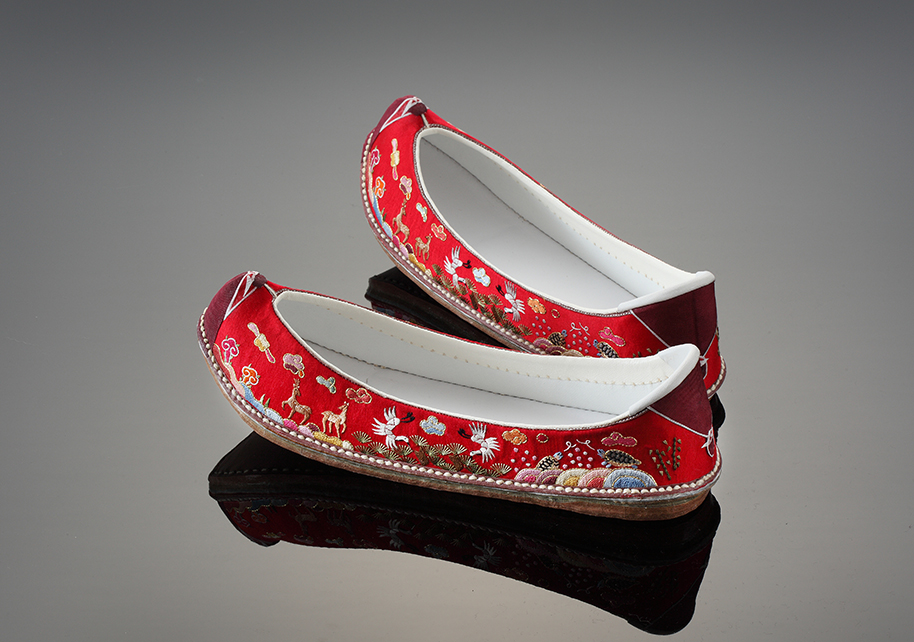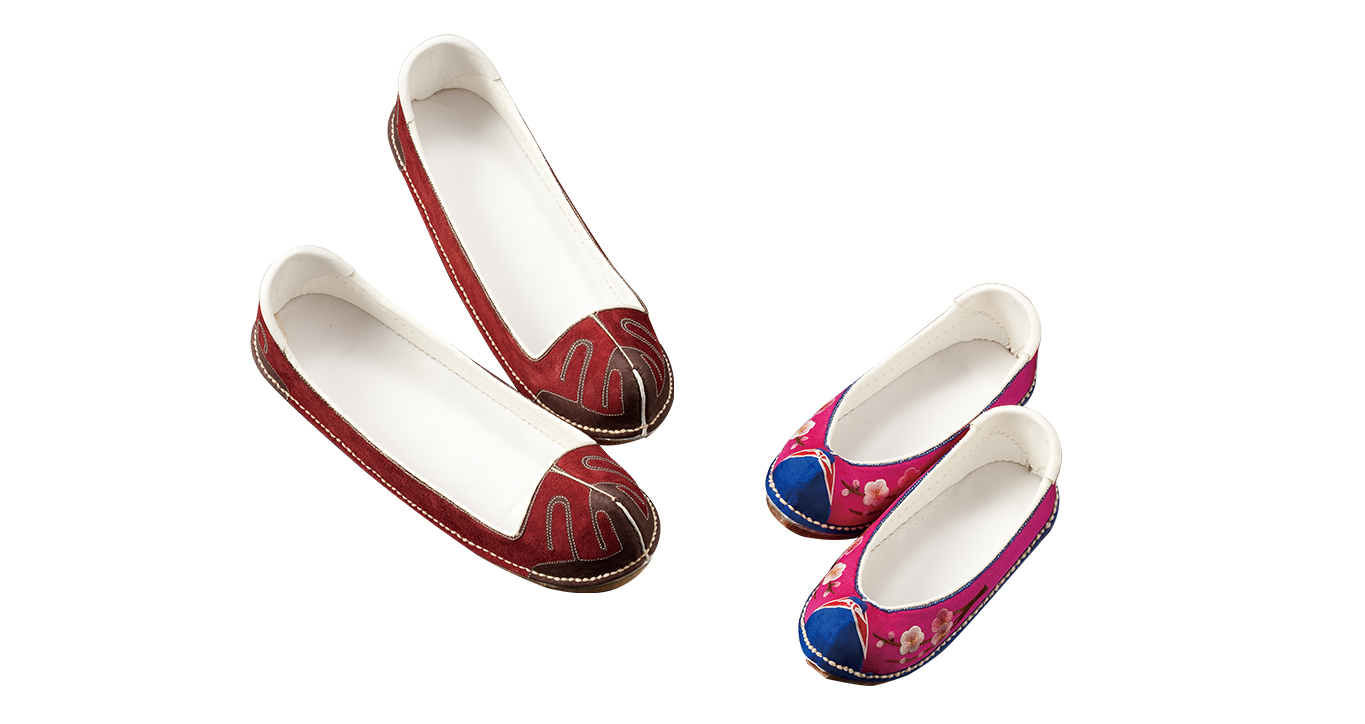November 2021

November 2021
Hwahye, Korean traditional leather shoes, fascinated royalty with their beautiful colors and elegant lines.
Written by
Tim Alper,
contributing writer
Photographed by
Seo Heon-gang
Photo Courtesy of
Hwang Hae-bong,
National Intangible
Cultural Heritage No.116

The name hwahye is a slightly confusing portmanteau that speaks volumes about the ways shoes were once manufactured in Korea. Hwa actually refers to shoes that extend above the ankle like Western-style boots. Hye, meanwhile, means shoes that do not go up beyond the line of the ankle. The type you will most often find at mod-ern Korean celebrations is the modeled after the latter, with many believing these models look more ornate than the heavier boot type.
Some people, including a number of celebrities, have also had authentic-style hwahye custom-made for their weddings, in order to add a touch of tradition to their otherwise modern celebrations.
But while these contemporary nods to hwahye hint at a revival in Korean traditional footwear’s fortunes, few people are aware of the long story of these shoes, and how, a few decades ago, they almost disappeared from the face of the planet.
Although buying your own pair of authentic hwahye shoes is certainly a considerable financial undertaking, for most people it wouldn’t break the bank. That certainly was not the case until very recently, however.
Nobody knows quite when hwahye were first made on the Korean Peninsula. But records from prehistoric times suggest that people were making and wearing leather predecessors to hwahye well over two millennia ago. During the Buyeo Kingdom (from circa the 2nd century BCE to 494 CE), proto-hwahye models were increasingly common, and their popularity extended into later kingdoms and dynasties.
But it was under the Joseon Dynasty (1392-1910) that hwahye had their real heyday. The wearing of hwahye became formalized and was woven into the complex class structure. Only royals and nobles were permitted to wear most designs, although eventually hwahye became part of the uniform for high-ranking members of the civil service. Common folk were not permitted to wear them―but in any case would not have been able to afford such footwear. Instead, they mostly had to make do with shoes made of materials like straw.

 © National Folk Museum
© National Folk Museum
Making hwahye according to Joseon traditional customs is no simple affair: A shoemaker needs to take dozens of steps to craft a pair, usually using linen, cotton or silk (sometimes all three) for the upper part of the shoe. Several layers of such materials are stretched out over a wooden mold or frame to prevent wrinkles from spoiling the aesthetic appeal.
And while modern cobblers make use of a range of chemical glues, the only kind of binding agents available to most traditional hwahye makers were made using rice. Rice-based adhesives are fiddly to work with, however, and often require the artisan to bite into patches to ensure a perfect bond.
As such, careful stitching was paramount. Some craftspeople used thick boar hair as needles instead of conventional metal pieces, complaining that metal restricted the flexibility they needed to execute their precise sewing methods. The sole of the shoe was typically made of leather―with a variety of animal hides tanned and pre-pared for the purpose.
One small blessing for the hwahye maker was the fact that there was no specific protocol to follow for left or right shoes. A hwahye piece can be worn on either foot―or at least initially this is the case.
Modern hwahye artisans have explained that while sneakers and other such footwear force the human foot to adapt to the shoe, hwahye do the inverse―allowing the shoe to reshape subtly during days of wearing to fit the feet of its owner.

It typically takes artisans up to a week to make a new set of hwahye, and Joseon-era records show that around 30 hwahye-makers were employed by the royal court during the high point of the dynasty, so high was the demand for these shoes.
However, the dawn of the industrial era was almost fatal for hwahye as mass-produced footwear became the norm, to the extent that hwahyejang, the designated craftspeople who made these shoes, became a dying breed.
However, a shoemaker named Hwang Hae-bong―who inherited his skills and equipment from his grandfather―decided to help revive the tradition before it was lost forever. His decision proved to be well-timed: When Seoul hosted the 1986 Asian Games, there was a sudden need to showcase traditional culture in all its glory. This proved to be the case once again two years later, when the capital hosted the Olympic Games.
And these two showpiece events have arguably proved to be catalysts, inspiring a new generation of Koreans to turn to seek out expert hwahyejang artisans to help them create unique designs for their weddings and birthday celebrations. With celebrities like Jun Ji-hyun embracing the trend, there is plenty to look forward to for fans of these very unique―and quintessentially Korean―shoes.